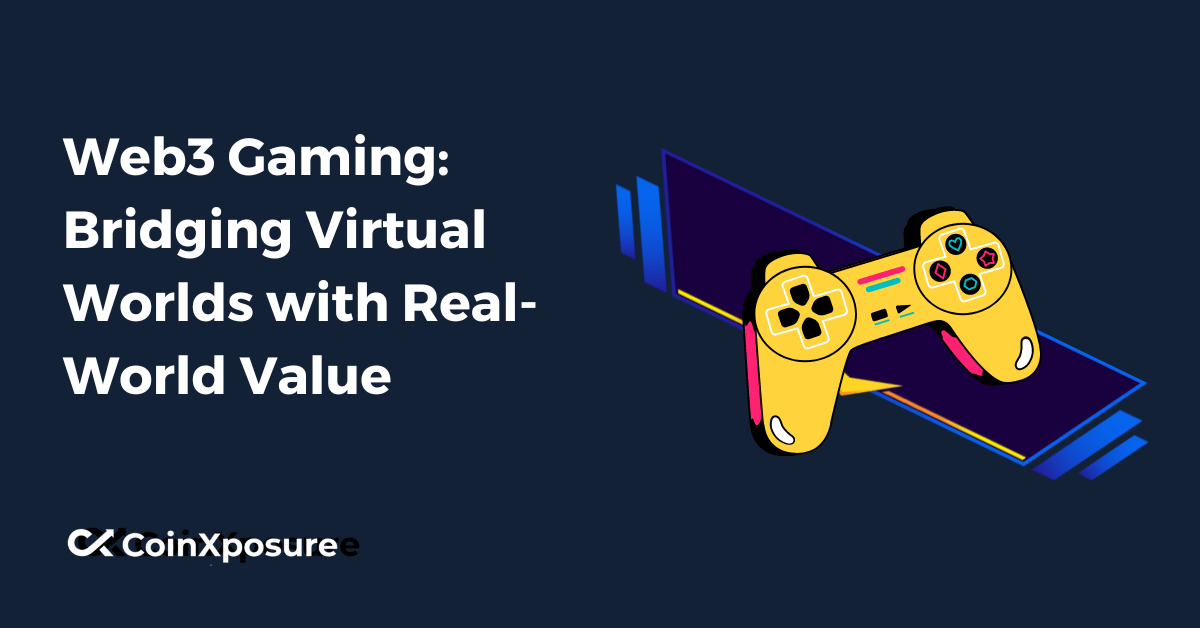Welcome to the frontier of gaming evolution – Web3 Gaming, a groundbreaking paradigm that goes beyond pixels and screens to redefine the very essence of virtual experiences.
In this realm, we witness the convergence of blockchain technology and gaming, propelling the industry into uncharted territories.
Web3 Gaming isn’t merely about immersive graphics or captivating narratives; it’s a revolutionary concept that bridges virtual worlds with tangible, real-world value.
Join us as we delve into the core components, challenges, successes, and the profound impact Web3 Gaming promises to have on the landscape of digital entertainment.
Key Components of Web3 Gaming
Web3 Gaming derives its transformative power from a fusion of cutting-edge technologies, reshaping traditional gaming landscapes.
At its core are key components that leverage blockchain technology to bring transparency, ownership, and real-world value to virtual realms.
These components redefine the player experience, introducing novel concepts like tokenized assets and play-to-earn mechanics. Let’s explore the foundational elements that underpin the revolution of Web3 Gaming:
- Blockchain Technology
- Non-Fungible Tokens (NFTs)
Blockchain Technology
Decentralized Ledgers: Ensuring transparency and security through distributed and immutable records.
Smart Contracts: Enabling trustless transactions and automated execution of predefined rules within the gaming ecosystem.
Non-Fungible Tokens (NFTs)
Unique In-Game Assets: Transforming in-game items into scarce, one-of-a-kind assets.
Digital Ownership: Granting players true ownership of their virtual possessions, verified on the blockchain.
These components form the backbone of Web3 Gaming, ushering in an era where virtual experiences extend beyond the confines of screens, fostering a new era of player engagement and empowerment.
Interoperability and Cross-Platform Integration
In the realm of Web3 Gaming, interoperability and cross-platform integration stand as pillars reshaping the gaming landscape. These concepts break down traditional silos, allowing seamless interaction and asset exchange across diverse gaming ecosystems.
Seamless Asset Transfer Between Games
Breaking Barriers: Overcoming limitations of isolated in-game economies by facilitating the transfer of assets between different games.
Interconnected Virtual Worlds: Allowing players to carry their digital possessions and achievements across various gaming environments.
Collaboration Across Different Gaming Ecosystems
Creating Synergies: Fostering collaboration between disparate gaming platforms for shared experiences and economies.
Expanding Player Universe: Enabling players to traverse multiple gaming universes without losing their accumulated digital wealth or progress.
Enhancing Player Experience Through Interconnected Virtual Worlds
Dynamic Environments: Crafting a dynamic gaming experience where players can explore interconnected virtual worlds with shared assets and economies.
Richer Narratives: Allowing game developers to create richer narratives that extend beyond individual titles, providing a more immersive and expansive gameplay experience.
Interoperability and cross-platform integration not only redefine the scope of individual games but also open avenues for collaborative storytelling and shared economies in the vast Web3 Gaming landscape.
Challenges and Solutions of Web3 Gaming
Navigating the landscape of Web3 Gaming brings forth a set of challenges that require innovative solutions to ensure the industry’s sustainable growth and widespread adoption.
Scalability Issues in Blockchain Gaming
Challenge: Blockchain networks can face scalability issues, causing delays and high transaction costs.
Solution: Implementing Layer 2 solutions, such as sidechains or state channels, to enhance throughput and alleviate congestion on the main blockchain.
Regulatory Concerns and Legal Frameworks
Challenge: The evolving nature of blockchain technology raises regulatory uncertainties and legal complexities.
Solution: Collaborating with regulatory bodies to establish clear frameworks and compliance standards, fostering a secure environment for Web3 Gaming development.
User Education on Blockchain Technology
Challenge: A significant barrier is the lack of understanding among mainstream users regarding blockchain technology.
Solution: Implementing comprehensive educational initiatives to bridge the knowledge gap, showcasing the benefits of blockchain in gaming and ensuring a smoother onboarding process.
Addressing these challenges head-on is vital for the successful integration and acceptance of Web3 Gaming.
By fostering solutions that enhance scalability, establish regulatory clarity, and educate users, the industry can pave the way for a more inclusive and sustainable future.
Future Trends of Web3 Gaming
The future of Web3 Gaming promises to be dynamic and transformative, driven by technological advancements and evolving player expectations. Several trends are poised to shape the trajectory of this innovative gaming landscape:
- Continued Evolution of Web3 Gaming
- Integration with Emerging Technologies
- Potential Impact on Traditional Gaming Industry
Continued Evolution of Web3 Gaming
Adaptive Technologies: Ongoing integration of emerging technologies like AI, AR, and VR to enhance gaming experiences.
Iterative Blockchain Solutions: Further refinement of blockchain protocols and technologies to address scalability and user experience challenges.
Integration with Emerging Technologies
AI Integration: Enhanced AI-driven gameplay, creating more realistic and personalized gaming experiences.
VR/AR Immersion: Deeper integration of virtual and augmented reality, blurring the lines between the physical and digital worlds.
Potential Impact on Traditional Gaming Industry
Mainstream Adoption: Increasing acceptance of Web3 Gaming concepts leading to mainstream adoption and incorporation by traditional gaming studios.
Economic Paradigm Shift: Continued exploration of play-to-earn models, potentially altering traditional revenue streams within the gaming industry.
The future trends in Web3 Gaming hold the promise of a dynamic, interconnected, and immersive gaming experience that goes beyond current boundaries, setting the stage for a new era in digital entertainment.
Conclusion
Web3 Gaming represents a seismic shift in the gaming landscape, transcending traditional boundaries and ushering in an era where virtual experiences hold tangible real-world value.
Fueled by blockchain technology, non-fungible tokens, and innovative concepts like play-to-earn, this transformative paradigm offers a glimpse into a future where gaming ecosystems are interconnected, immersive, and economically empowering.
As we navigate challenges such as scalability and regulatory concerns, solutions like Layer 2 scaling and collaborative regulatory frameworks pave the way for a more inclusive and sustainable Web3 Gaming industry.
Interoperability and cross-platform integration break down silos, enabling players to seamlessly transfer assets and explore interconnected virtual worlds.
In this era of Web3 Gaming, the virtual and real worlds converge, redefining the very essence of gaming and providing players with unprecedented opportunities for ownership, collaboration, and economic empowerment.
As we embrace this dynamic future, the boundaries between pixels and reality blur, opening up a new frontier where the possibilities are as limitless as the imagination itself.












